Stabilize Your Core: 6 Side Plank Variations
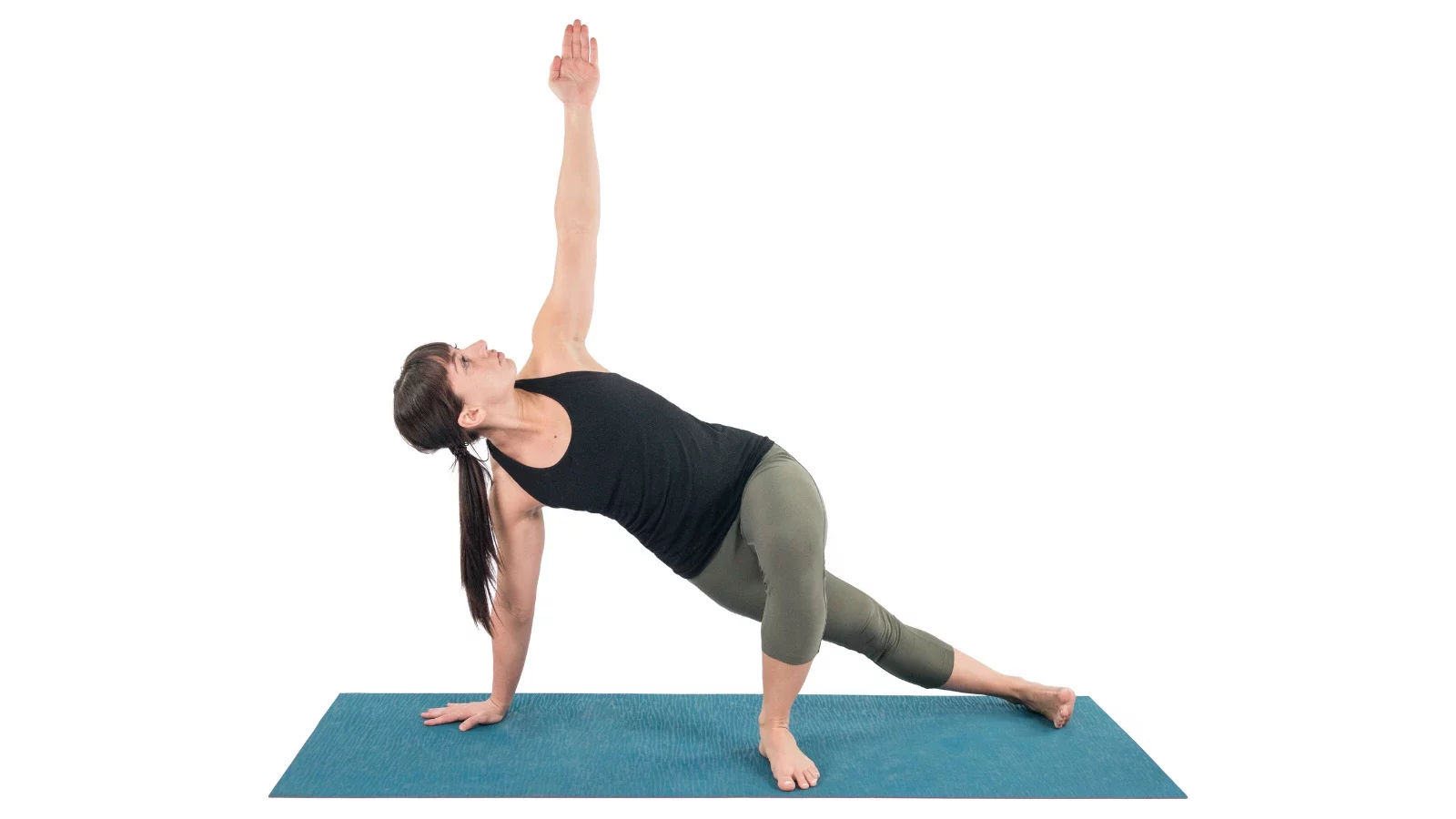
Side Plank Pose (Vasisthasana) is a good strengthening pose for so many reasons. Improving core strength requires strengthening from all sides of your core, front, back and sides. Because Side Plank recruits the oblique abdominal muscles to help stabilize your hips, it strengthens the sides of your core. And because spinal stabilization is required to keep the alignment in this pose, Side Plank also strengthens your spinal muscles. This pose has even been prescribed for people with scoliosis to strengthen the convex side of their curve, resulting in a reduction of the curve overall.
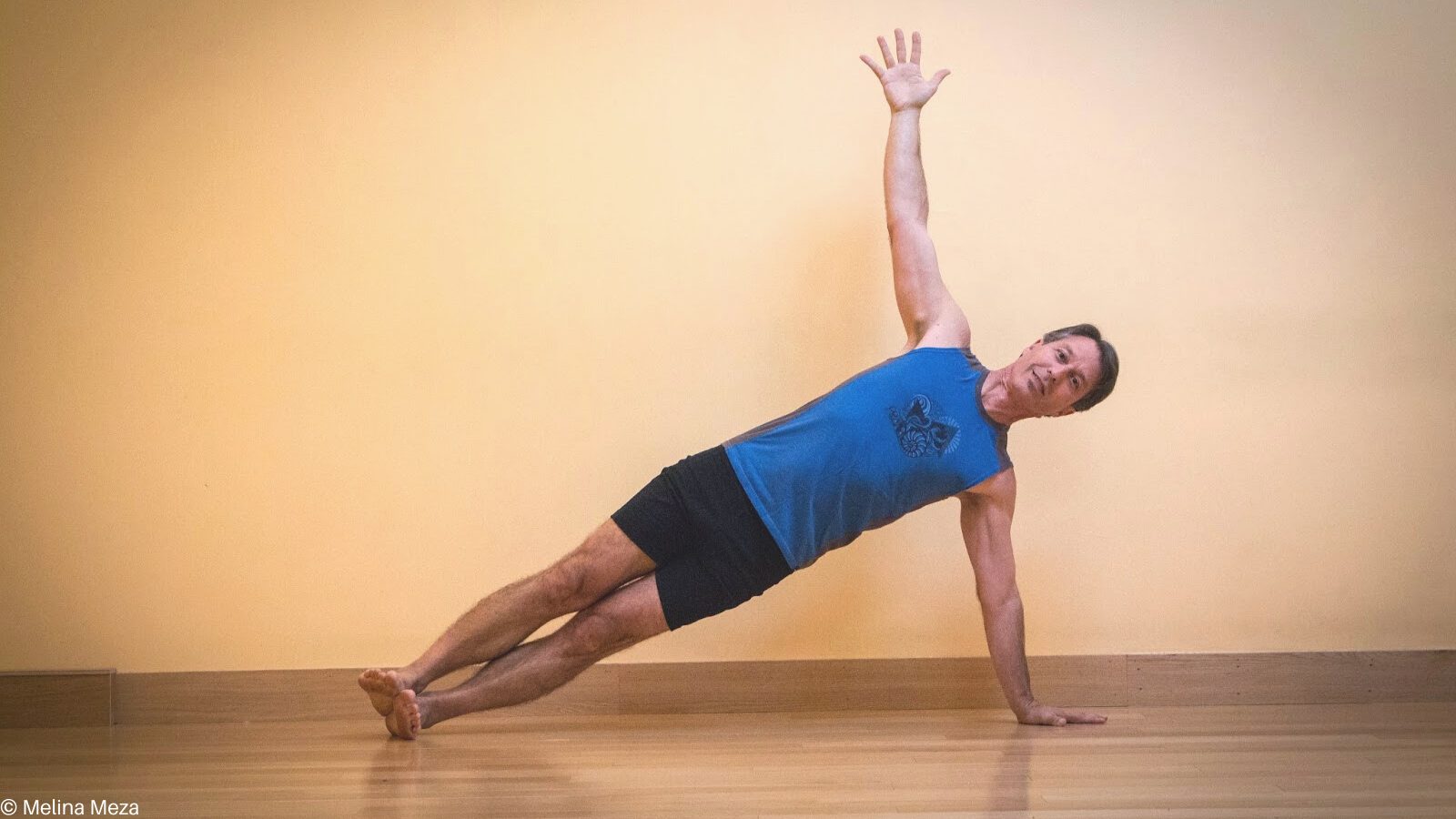
Additionally, having weight on your arm engages all of your shoulder stabilizer muscles to keep the head of your upper arm bone centered in the socket. Your gluteus medius and maximus (side and back hip muscles, otherwise known as your buttocks) also need to fire here, adding to the completeness of this pose for creating whole-body strength and stability.
Like Plank Pose (Phalakasana), Side Plank Pose doesn’t flex or extend the spine, making it safer for people with back or disc injuries than many other core strengtheners. And there are so many variations of Side Plank that make it more accessible that it’s tough to find a reason not to jump in and start!
How to Practice Side Plank Pose Variations
1. Kickstand Support for Hips
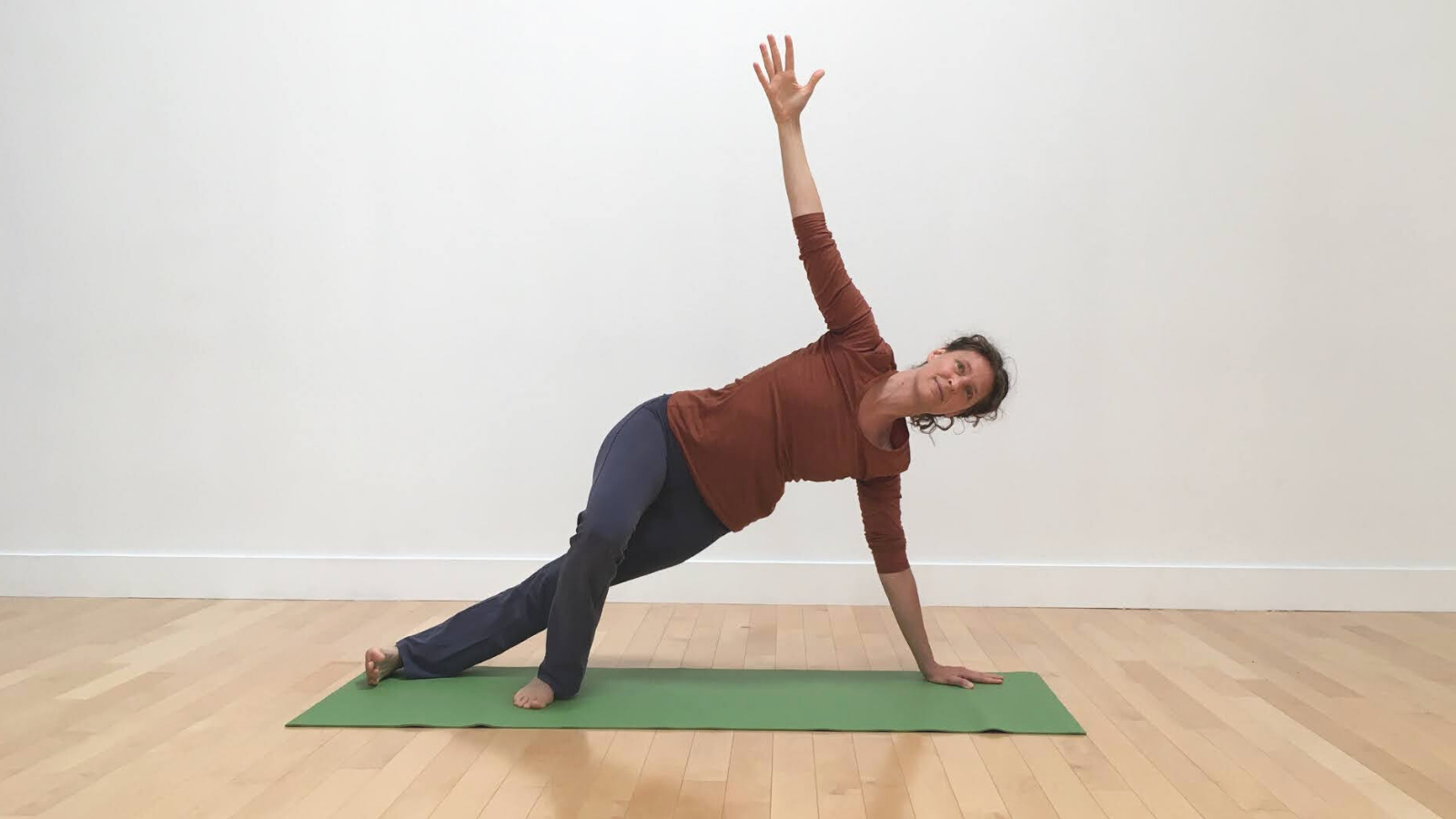
Side Plank is an intense pose that requires quite a lot of strength to do correctly. Going directly into the pose when you don’t have the strength or experience to get the alignment right could lead to injury. For this reason, I recommend coming into the pose one step at a time, and maybe even working with this version for a while before attempting another version.
- To come into the Kickstand version, begin in Downward Facing Dog Pose (Adho Mukha Svanasana).
- Glide forward into Plank Pose to find the length of your body and lift your ribcage away from your arms.
- Step one foot forward, in line with your other knee (this is not a lunge position), and swivel toward that forward foot.

- Once you swivel open, your back foot (the extended leg) should be on its pinky toe side, and your front foot (bent knee) comes flat onto the floor, like you could stand on it.
- Press the front foot into the floor. This will take some of the weight of your hips off your arm and give you a chance to rest into your back body. Lengthen from your head to your back heel.
- If this feels easy, you could extend your front leg to meet the other leg.
2. Shin on the Floor

This version is even gentler than the Kickstand version. With your hips completely supported by your shin, you can really take your time exploring your body positioning.
- Start on hands and knees in Tabletop Pose (Bharmanasana). Walk your hands slightly forward of your shoulders.
- Extend one leg behind you, keeping your toes tucked under on the floor, then drop the arch of your foot (the big toe side) to the floor, with your heel dropping toward your other foot.
- From there you can bring the same arm as the extended leg to your hip, and, once sure of your balance, extend your top arm.
- Press your hand into the floor and lift your ribcage away from that arm, up toward the other arm, and take some of the weight into your back foot. This is where you could play with letting weight on your shin get lighter, testing the strength of your pose.
- If that’s easy, lift your shin off the floor, and possibly extend the knee and place your bottom leg in front or behind your other leg.
3. Forearm Side Plank Variation
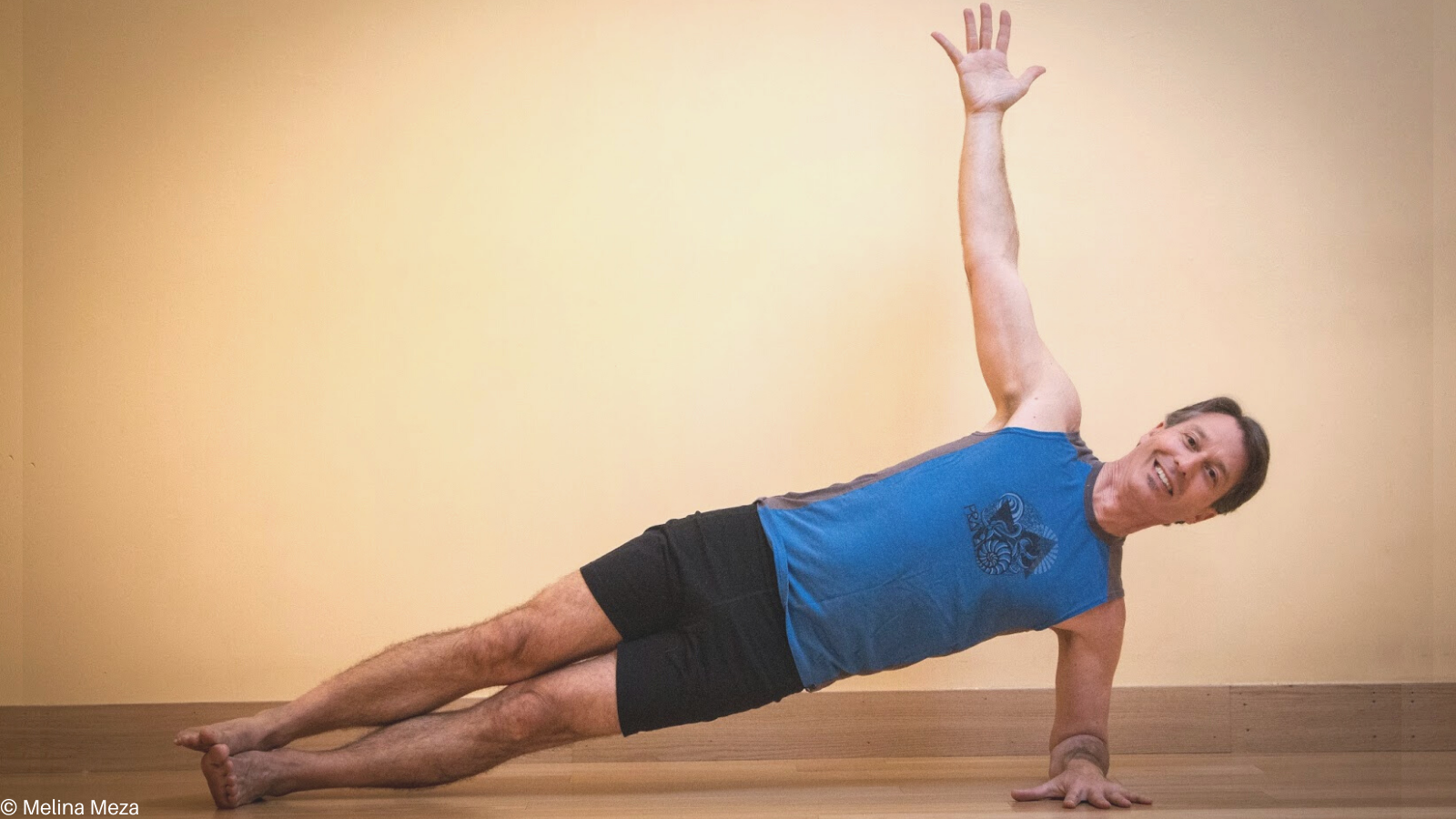
If you have a hand or wrist injury, this version allows you to practice without as much weight on your hand and wrist. You can use this forearm version with all of the variations of Side Plank poses shown here. To come into the pose, start from a Downward Facing Dog Pose on your forearms rather than the classic version of Downward Dog.
You can also practice this Forearm Version with your knees bent. This variation can be a step between the Shin on the Floor version above and the extended legs version that is discussed in the previous paragraph.
- Start with your hip on the floor and your knees aligned with your hips and shoulders, feet back behind you.
- Press your lower leg into the floor to lift your hips. (You can even do reps here to build strength.)
4. Separated Feet
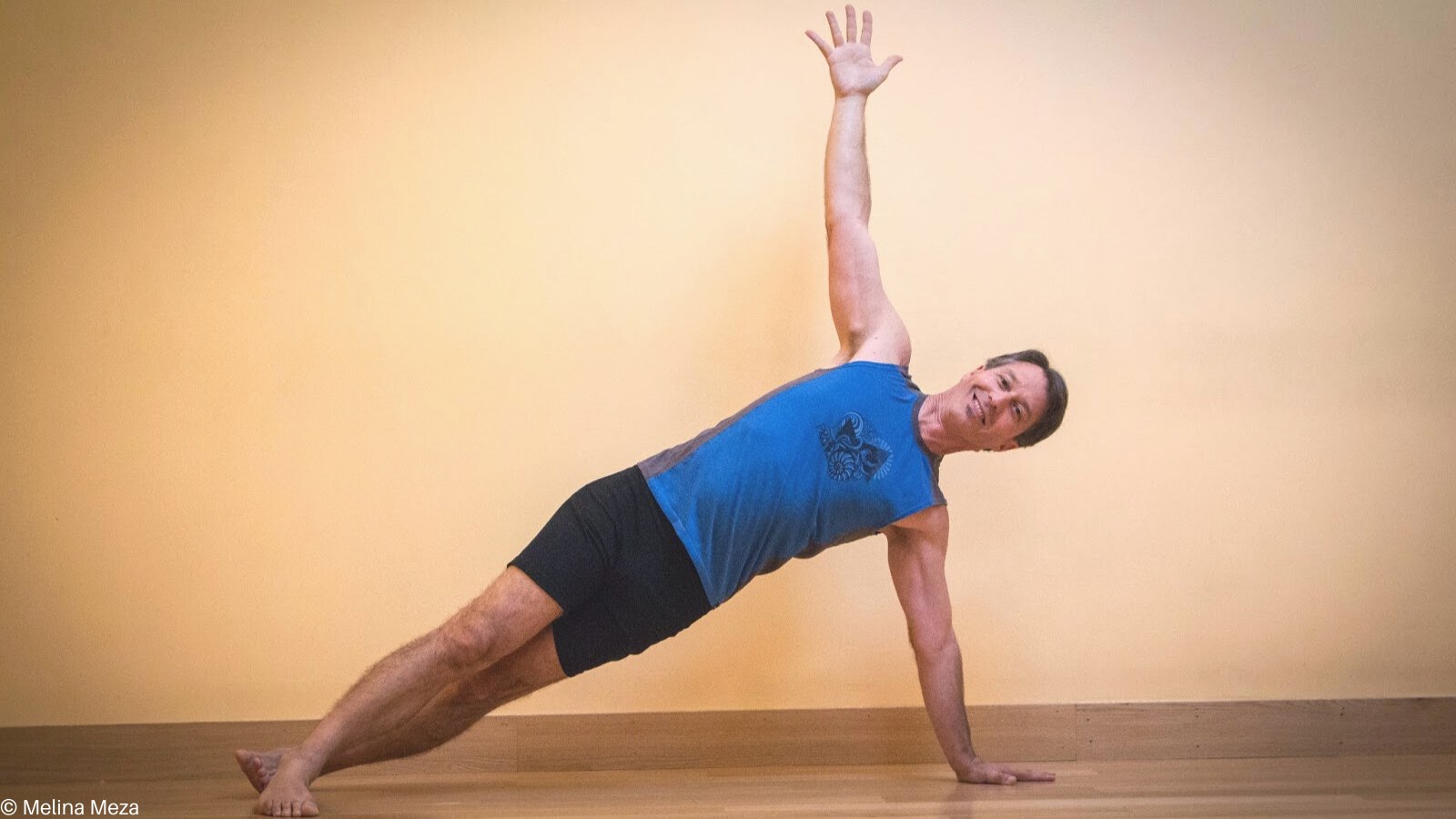
If you’re feeling strong enough to come into the full pose with integrity, but are struggling with balance, placing your top foot slightly forward of your bottom foot as shown in the photo above offers a little more support with balance. See “Working in the Classic Pose or with Separated Feet” below for instructions.
5. Wall Variations 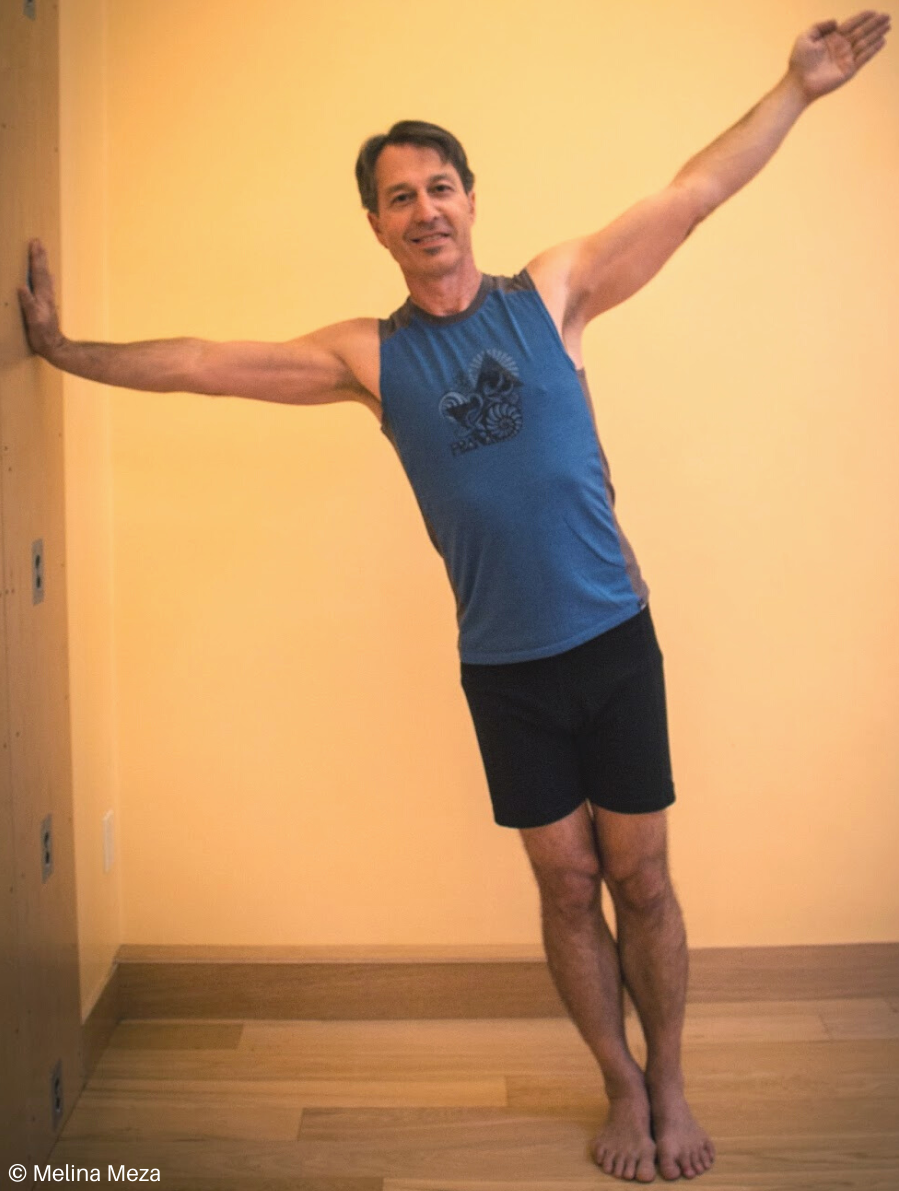
Using the wall instead of the floor allows you to gradually build the strength needed to practice the floor version and can provide even more room for exploring your alignment in this pose.
- Start with your side to the wall and place your flat palm onto the wall, a little lower than the height of your shoulder.
- Step your feet away from the wall until your inner foot lines up with your outer shoulder. Your outer foot will have very little, if any, weight on it now, so stand on your inner leg and find your shoulder alignment. This is the easier version of Wall Side Plank.

- If you’re ready to put more weight onto your arm, you can bring your outer foot to the inner thigh of your standing leg, as you would in Tree Pose (Vrksasana). Your outer arm can then reach overhead, palm facing the wall.
In this pose, I like to think about pressing my inner hand into the wall, spreading my collarbones and ribcage away from that arm, and letting the energy circle through my chest and out through the fingers of my raised arm. Keep your neck soft as you work with your arms and shoulders.
How to Practice Classic Side Plank Pose or with Separated Feet
- To practice the classic Side Plank Pose or the version with separated feet, start in Downward Facing Dog Pose.
- Lift into your back body as you glide forward into Plank Pose. Lengthen your body and lift your ribcage away from your shoulders before you turn onto the outer edge of one of your feet.
- Stack the other leg on top of the base leg for the classic pose. Alternatively, you can place your top foot slightly forward of your bottom foot for the separated-feet version.
- Your top arm can extend toward the ceiling in line with your other arm and your collarbones.
- I like to imagine that there’s a wall behind me and send my weight back into my back body as if I were leaning on that wall. It helps me to align with my spine, which makes extending the pose from head to heel easier. The longer your body, the lighter the pose will feel.
Also, read...
In Celebration of Gray-Haired Yoga – Busting the Myth of the Yoga Body
Stand Firm: 6 Easy Balancing Moves for Your Daily Yoga Routine
Related courses

Bridget Frederick, eRYT 500, began studying yoga in 2002 and is a graduate of The Yoga Room’s 500-hour Advanced Studies Program. Her pursuit of yoga came after a car accident that made a mild chronic back problem unbearable. Bridget found relief at the Yoga Room with the Iyengar-style focus on alignment and core strength. As a teacher, she’s worked with students of all ages and abilities. Bridget’s goal is to make yoga accessible to anyone who is interested in finding the relief, strength, or stillness that yoga can offer. Whether you’re brand new to yoga or a well-practiced regular, you’ll emerge feeling stretched out and stronger than when you came in. She gets inspiration and regular mentorship from my Yoga Room teachers: Donald Moyer, Mary Lou Weprin, Gay White, Ada Lusardi, Sandy Blaine, and Herta Weinstein.



